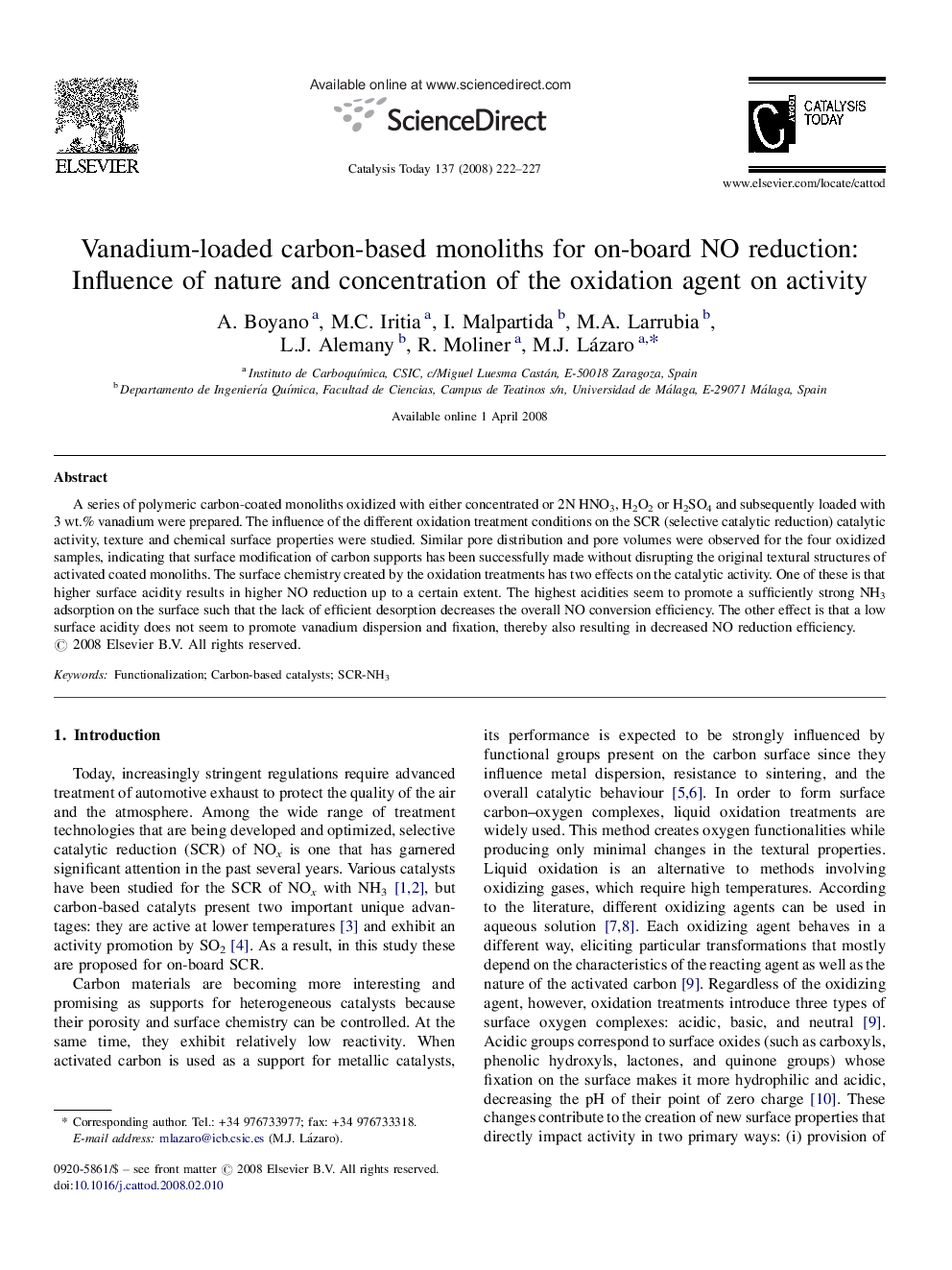| Article ID | Journal | Published Year | Pages | File Type |
|---|---|---|---|---|
| 57515 | Catalysis Today | 2008 | 6 Pages |
A series of polymeric carbon-coated monoliths oxidized with either concentrated or 2N HNO3, H2O2 or H2SO4 and subsequently loaded with 3 wt.% vanadium were prepared. The influence of the different oxidation treatment conditions on the SCR (selective catalytic reduction) catalytic activity, texture and chemical surface properties were studied. Similar pore distribution and pore volumes were observed for the four oxidized samples, indicating that surface modification of carbon supports has been successfully made without disrupting the original textural structures of activated coated monoliths. The surface chemistry created by the oxidation treatments has two effects on the catalytic activity. One of these is that higher surface acidity results in higher NO reduction up to a certain extent. The highest acidities seem to promote a sufficiently strong NH3 adsorption on the surface such that the lack of efficient desorption decreases the overall NO conversion efficiency. The other effect is that a low surface acidity does not seem to promote vanadium dispersion and fixation, thereby also resulting in decreased NO reduction efficiency.
